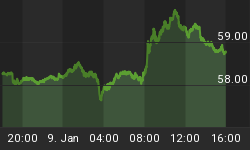No, I am not talking about the Democratic Party. I am talking about the mainstream commentators on the Federal Reserve's second round of quantitative easing, or QE2. In their defense, perhaps one of the reasons they don't get is because the way the Fed, itself, marketed it. This might suggest that the Fed doesn't really get it either. Firstly, the fact that the Fed announced that QE2 would involve the purchase of Treasury coupon securities rather than Treasury bills implied that one of the goals of QE2 was to bring down the interest rate levels on longer-maturity securities. Why is it so desirable to bring down the yield on longer-maturity securities? Because for decades, economists have clung to the unsubstantiated hypothesis that the interest rates on longer-maturity securities are what "count" in terms of decisions related to private-fixed investment expenditures. These economists believe that lower interest rates on longer-maturity securities promote private fixed-investment expenditures. These same economists failed to observe that the interest rates on longer-maturity securities behave pro-cyclically. That is, these rates rise when credit demand and spending growth are rising and fall during recessions. One of the most, but far from perfect, leading indicators is the spread between the yield on the Treasury 10-year security and the rate on federal funds. Typically, but again, not always, this yield spread is positively correlated with real GDP growth (see Chart 1). Because the yields on the 10-year and 30-year Treasury securities have been rising since early October (see Chart 2), when QE2 fever took hold in the financial markets, the chorus has started that QE2 will fail. Had the Fed said that QE2 would involve the purchase of $600 billion of Treasury bills rather than Treasury coupon securities, we could have avoided at this phase of uninformed criticism of the policy. Of course, the chorus of critics would have complained that by the Fed purchasing bills rather than coupons it was not affecting the "important" part of the yield curve.
Chart 1
Chart 2
Another Fed rationalization for embarking on QE2 was to raise inflation expectations. Why in the world would an independent central bank want to raise inflation expectations? Isn't the whole idea of central bank independence to contain inflation? Well, again, economists are hung up on the "real" rate of interest - that is, the observable nominal interest rate minus the unobservable investor inflation expectations. That real rates of interest influence economic decisions has a lot more theoretical basis than does the notion that nominal bond yields do. But even though there is more theoretical underpinning for real rates than nominal rates, there is little empirical support. After all, if real interest rates were such a good predictor of future economic activity, why is there not a real interest rate in the Conference Board's index of Leading Economic Indicators? The folks who put this index together are guided by what "works," not by theoretical purity. One reason that I believe that the empirical support for a real rate of interest as a leading indicator is lacking, aside from difficulties in directly measuring inflation expectations, is that equilibrium real rate of interest is always changing, just as the equilibrium price of copper changes from day to day due to changes in supply and demand. When the levels of interest rates are low and especially when the levels of short-maturity interest rates are approaching zero, which they are now, because nominal interest rates cannot move into negative territory, the only way to get real interest rates lower is to raise investors' inflation expectations.
The Fed appears to have made some progress in this area even before purchasing its first security of the $600 billion tranche. In recent weeks, the yield on the Treasury Inflation-Protected 5-year security has moved into negative territory and the yield on the Treasury Inflation-Protected 10-year security has fallen (see Chart 3). The yields on these inflation-protected securities are proxies for real interest rates. So, if lower real interest rates are the goal of QE2, then "mission accomplished."
Chart 3
But I do not believe that bringing down nominal interest rates, real interest rates, the foreign-exchange value of the dollar and/or raising the value of U.S. equities is what QE2 is, or should be about. I think that if the Fed desires a quicker pace of nominal GDP growth, the goal of QE2 should be to increase the quantity of the sum of Federal Reserve and commercial banking system credit. After all, why is it called quantitative easing if it does not involve quantities? The Federal Reserve has the unique ability to be able to create credit figuratively "out of thin air." So does the commercial banking system, if the Fed provides the "seed money." The ability to create credit out of thin air implies that the recipients of that credit can increase their current spending without any other entity in the economy having to cut back on its current spending. Chart 4 shows that combined Federal Reserve and commercial banking system credit have recently contracted at an unprecedented rate. The rate of contraction is slowing. The goal of QE2 should be to get this credit aggregate growing. If $600 billion of securities purchases by the Fed does not result in growth in this credit aggregate, then the Fed could increase the quantity of its securities purchases. Milton Friedman passed away only a short time ago, in 2006. It seems that much of his wisdom about the importance of quantities rather than prices (that is, interest rates) with regard to monetary policy passed with him.
Chart 4
Paul Kasriel is the recipient of the 2006 Lawrence R. Klein Award for Blue Chip Forecasting Accuracy















